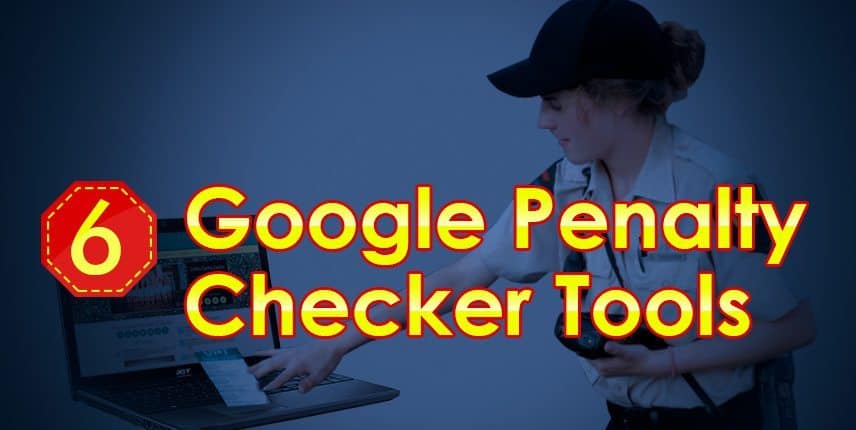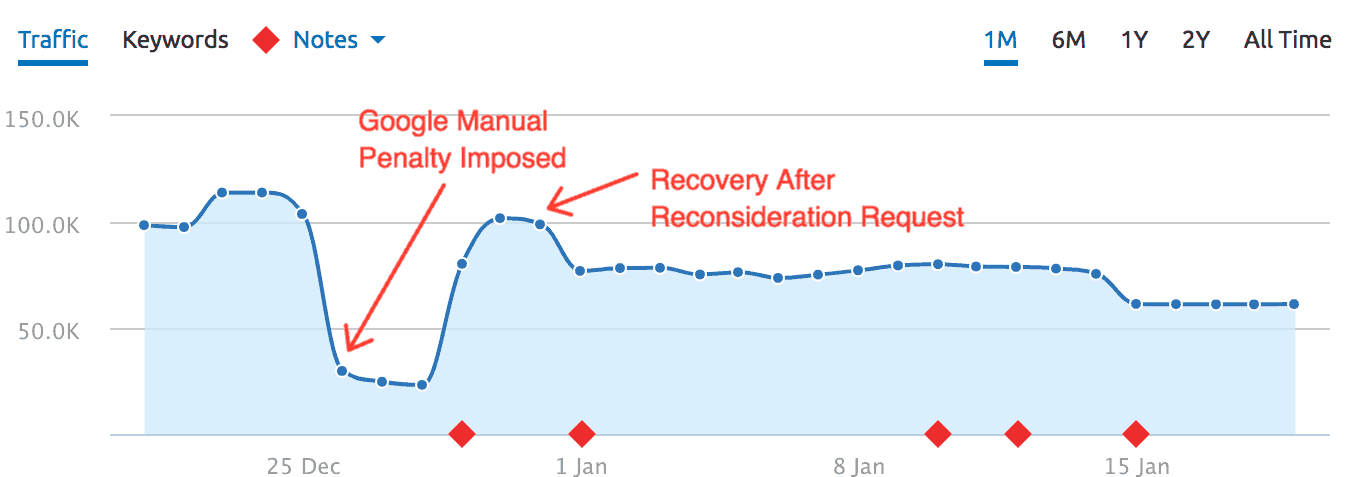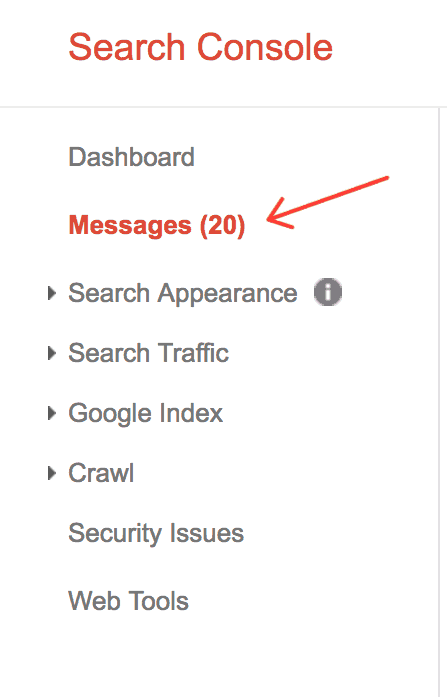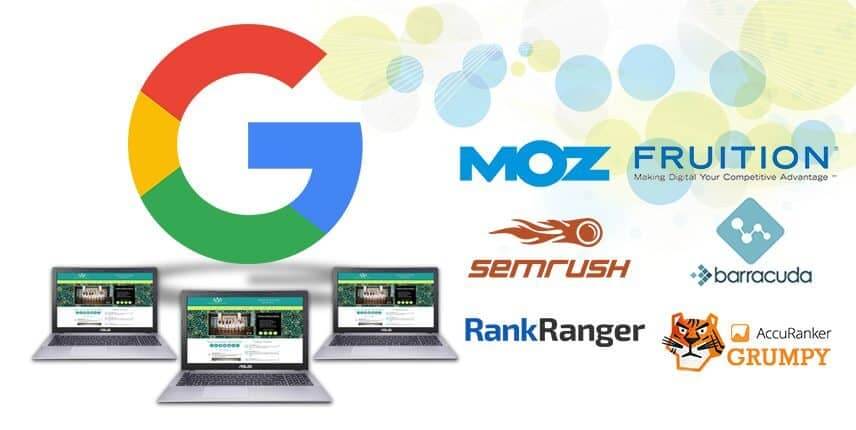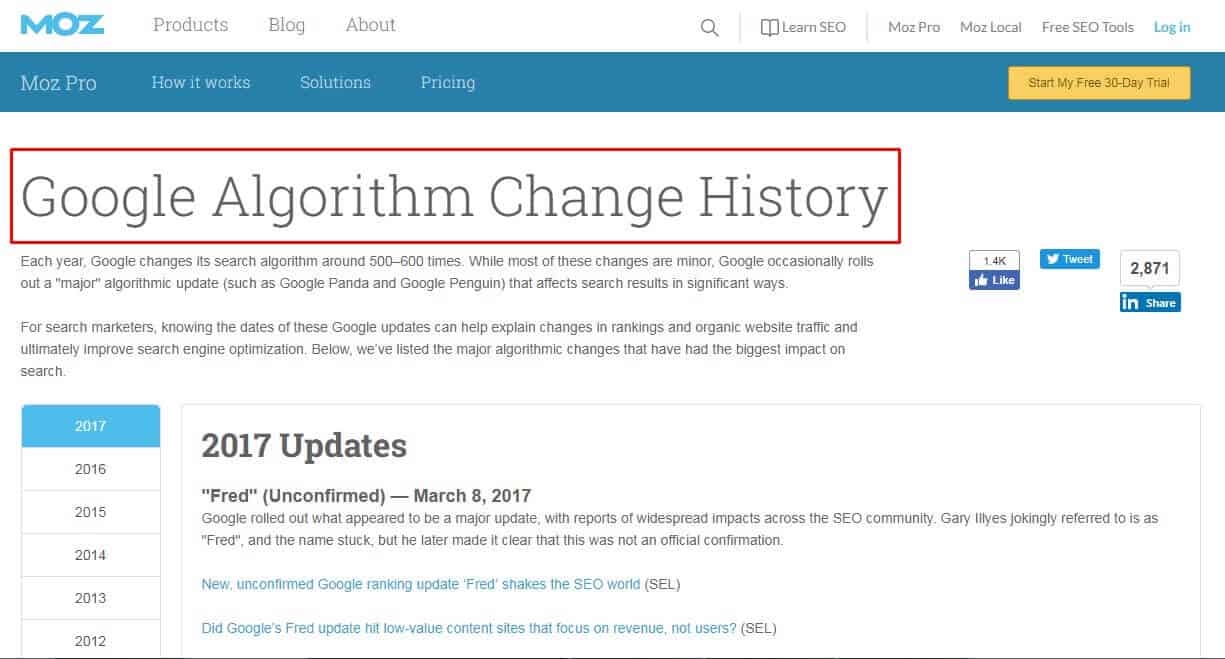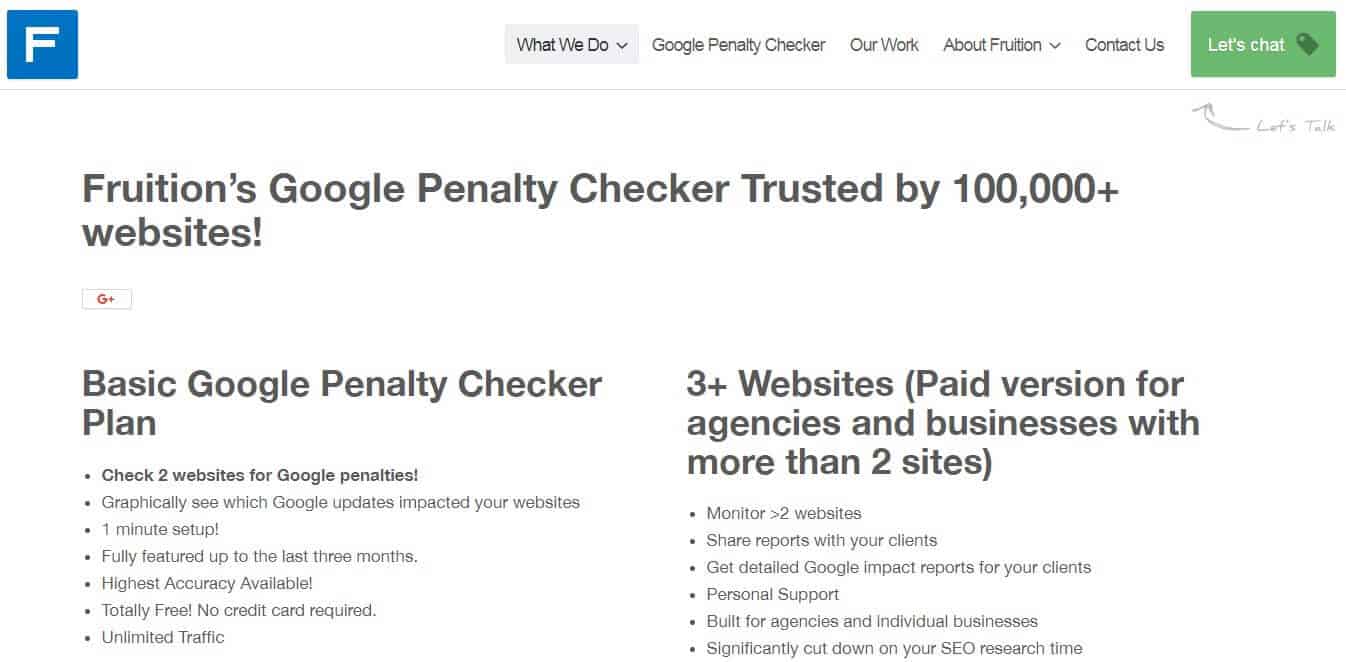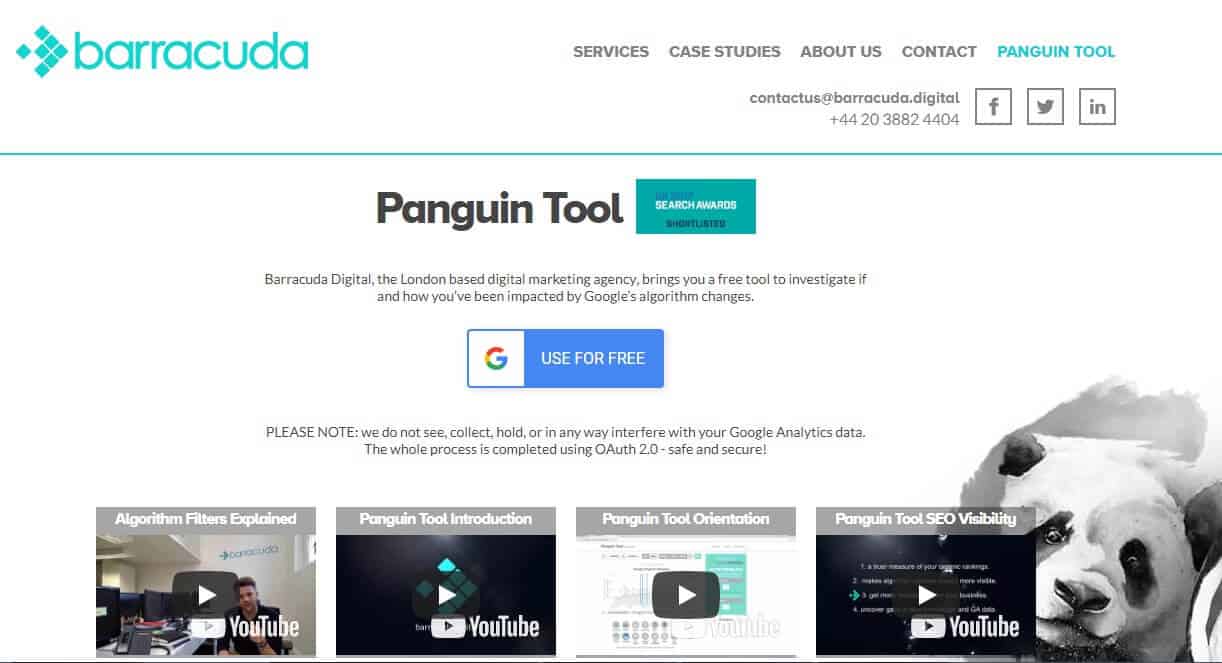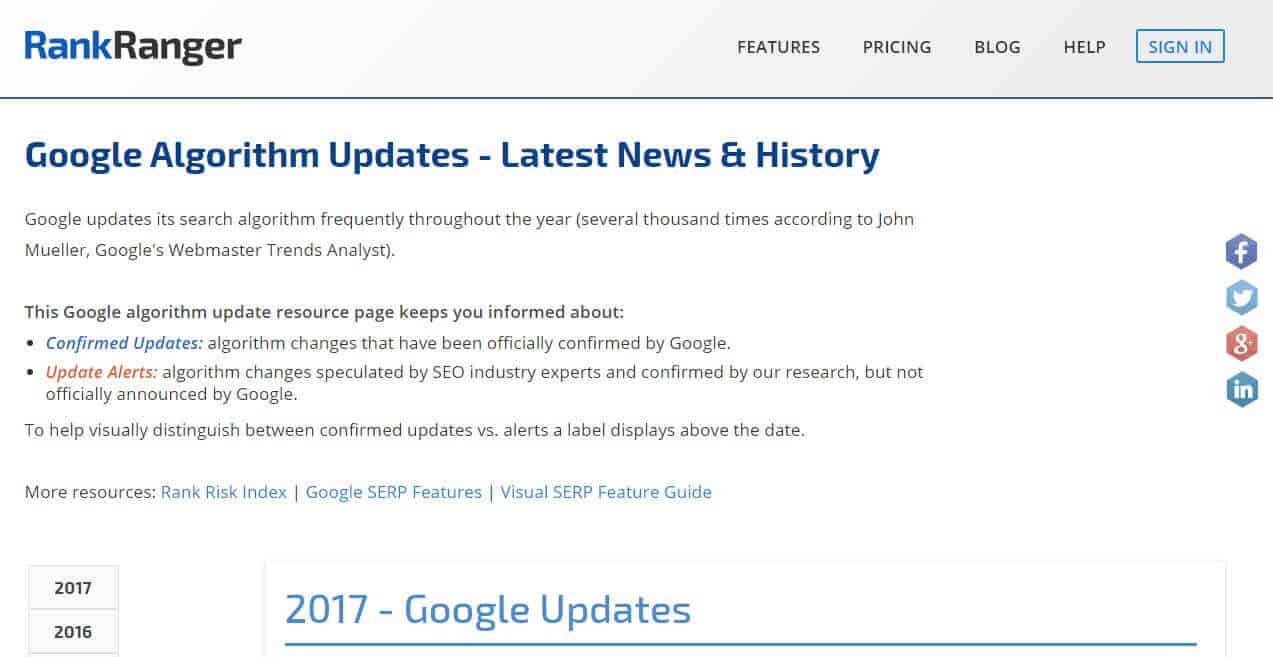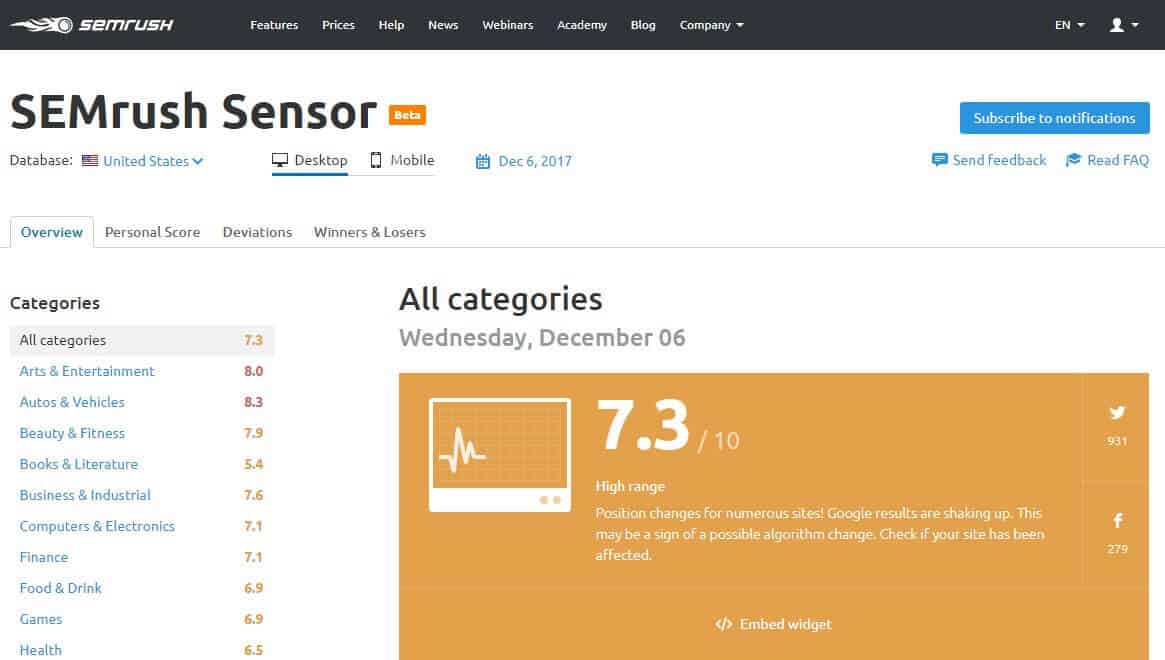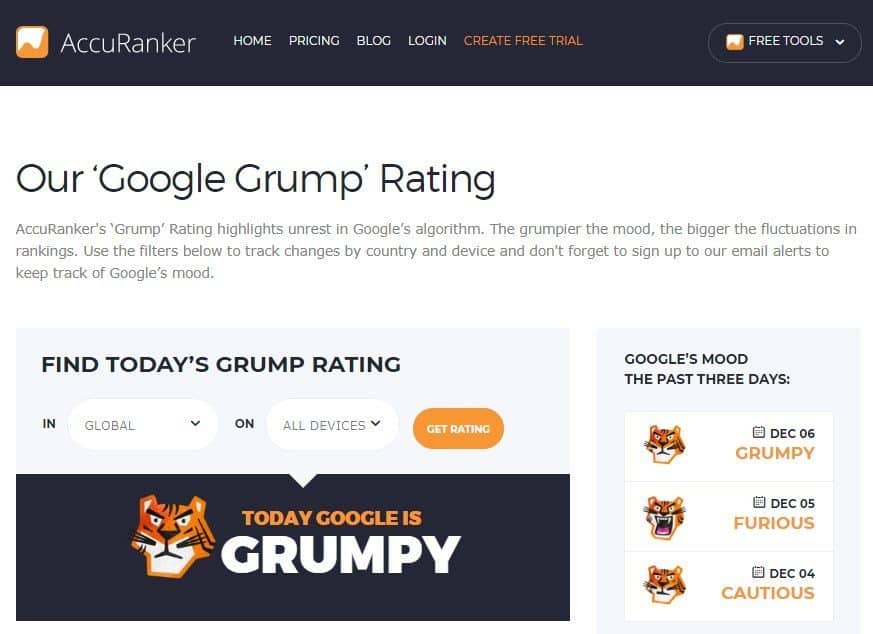6 Google Penalty Checker Tools To Solve Your SEO Issues
Nobody wants to wake up one day and see they have been hit with a penalty from Google.
Having one will negatively affect your search rankings. It will also cause a drop in traffic and your bottom line.
At times it can be tricky to know if you have a penalty.
Google’s algorithms are proprietary. Some violations may be apparent, but others can fly under the radar.
The reality is that with “shortcut” and cheap SEO, I am contacted daily by business owners dealing with the dreaded Google search penalty.
One solution is to use Google penalty checker tools. These tools can help you identify if the Google hammer has nailed you. Once you determine which penalty you have been affected by, you can work to rectify the issue.
I suggest trying to use the information provided here, but if you still have questions, check out my penalty recovery services.
Keep in mind as you read that there are two types of Google penalties. If you get a manual action, Google will notify you in Search Console or Webmaster Tools. However, if you are hit with an algorithmic penalty, you will won’t get a note. These are much more difficult to identify.
How to identify a Google penalty
Even if you know you have been penalized, it is essential to determine the exact nature of the penalty. Take your time before making changes.
Sometimes, the remedy is obvious. At other times, it may not be. Analyze the results, look at the problem logically.
Follow these steps to resolve a penalty:
- Learn about the penalty and what it entails
- A comprehensive SEO Audit your site and identify potential problems
- Double-check everything
- Make changes as needed to be in compliance with Google TOS
- Send Google reconsideration request
If you go in and change things without due diligence, you may end up making matters worse. The cautious approach is best.
What Is a Google Penalty?
Let’s start by identifying our terms. A Google penalty is a punishment handed out by Google.
A Google penalty may result from an algorithm update. An example was the Mobilegeddon update that penalized sites for not being mobile-friendly.
Penalties may also be the result of a manual review. If someone from Google sees that you have used “black hat” tactics, they can ding you for it. Your site must be in accordance with Google’s webmaster guidelines. That is the best way to avoid a penalty.
Penalties can vary in severity. The most common result is that your search ranking decreases. In extreme cases, you may end up being blocked from Google.
Some penalties affect every page on a site. Others are specific to keywords pages. Some of the most common reasons for Google penalties include:
- Manipulative or unscrupulous link-building activity
- Use of private blog networks or PBNs
- Keyword stuffing
- Low-quality content or duplicate content
Google’s algorithm gets increasingly sophisticated. That means it is harder to get away with underhanded SEO tactics on your site.
A Google penalty can have a devastating impact on your business.
Most Common Google Penalties of 2019
Penalties come in all sizes, but some are more common than others. Let’s review some of the most common penalties. Many come in the form of algorithmic updates.
Google Panda
First introduced in 2011, Google Panda was an algorithm updated that targeted low-quality sites. Sometimes known as content farms, these sites rely on “spun” content. The arrival of Panda rewarded sites with high-quality, original content.
The initial rollout of Panda affected approximately 12% of all websites. Most people noticed an immediate improvement in the ranking of news and social media sites. Sites that relied heavily on advertising content were penalized.
Complaints were common in the early days after Panda’s release. Google worked with webmasters. Many provided data points to help Google refine Panda and improve results.
For the next two years, Panda was regularly updated. As of March 2013, Google announced that Panda would be added to the core algorithm.
To help webmasters avoid Panda penalties, Google provided some guidelines. You can find their information about how to build a high-quality site by clicking here.
Mobilegeddon
Google’s mobile-friendly update, widely known as Mobilegeddon, had a huge impact. It applied a simple yes/no question to web pages. Either they were mobile-friendly, or they were not. There is no gray area.
Before its release, this update got a lot of hype. There was fear that the impact would be huge. However, most sites were not impacted because they heeded Google’s warnings. Sites that were not mobile-friendly took a significant hit.
Other Google Penalties:
- Unnatural backlinks to your website
- Unnatural links from your site
- User-generated spam
- Hacked website
- Pure spam
- Spammy free hosts
- Spam structured markup
- Hidden text of keyword stuffing
- Thin content with low or no added value penalty
- Cloaking or sneaky redirects
How to Recover from a Google Penalty
If your site is hit with a Google penalty, what can you do? The good news is that you can recover. You just need to know how to do it.
Google assigns about 400,000 manual penalties each month. That is a lot. What’s even more surprising is that they get only 20,000 requests for reconsideration monthly. That means most webmasters are not trying to recover.
Have You Been Penalized?
The first step is finding out if you have been penalized. Manual penalties are easy to spot. Directly go to Google Webmaster Tools and check your inbox. You will be notified, and Google will tell you why you have been penalized. They will also tell you what to do to correct it.
Algorithmic penalties are a little trickier to spot. You will not be notified. If you notice a change in your SERP, you will have to match it against announced algorithmic updates. Google lists them here.
Once you know you have been penalized, it is your job to fix the issues that led to the penalty.
If you got a manual penalty, that should be easy. Google will tell you what you need to do to recover.
If you have received an algorithmic penalty, the process is more laborious. It can be done, but you will need to be thorough and persistent.
A penalty that results from low-quality content can be corrected by upgrading your site. If you have been using spun content or violated any copyrights, you will need to remove that content. Then replace it with original content that’s relevant to your audience.
A link-based penalty requires you to do a link audit for your site. Try using Google’s Webmaster Tools to download your links.
You will have to do the following:
- Filter out links with the “donotfollow” tag
- Go through the remaining links and identify low-quality ones
- If you can remove the backlinks on your own, do it. An example would be spam link left as a comment on your blog.
- Email webmasters for those you cannot control and ask for them to be removed. Make sure to keep track of the emails you send.
- Update your log as you receive requests and links are removed.
- Disavow any backlinks that you cannot get removed.
Once you have followed these steps, you can ask Google for a reconsideration.
How to Apply for a Penalty Reconsideration from Google
If you’ve received an algorithmic penalty, you don’t need to request a reconsideration. The algorithm will take care of it if you’ve resolved the issue.
Manual actions do require a penalty reconsideration. Here’s how to do it:
- Sign into your Search Console.
- Review all versions of your site to ensure your data is complete.
- Double check your manual action. Confirm that you have done everything you can to correct the issue.
- Click on “Request a review” to ask Google to reconsider the penalty.
- Provide documentation of the changes you’ve made.
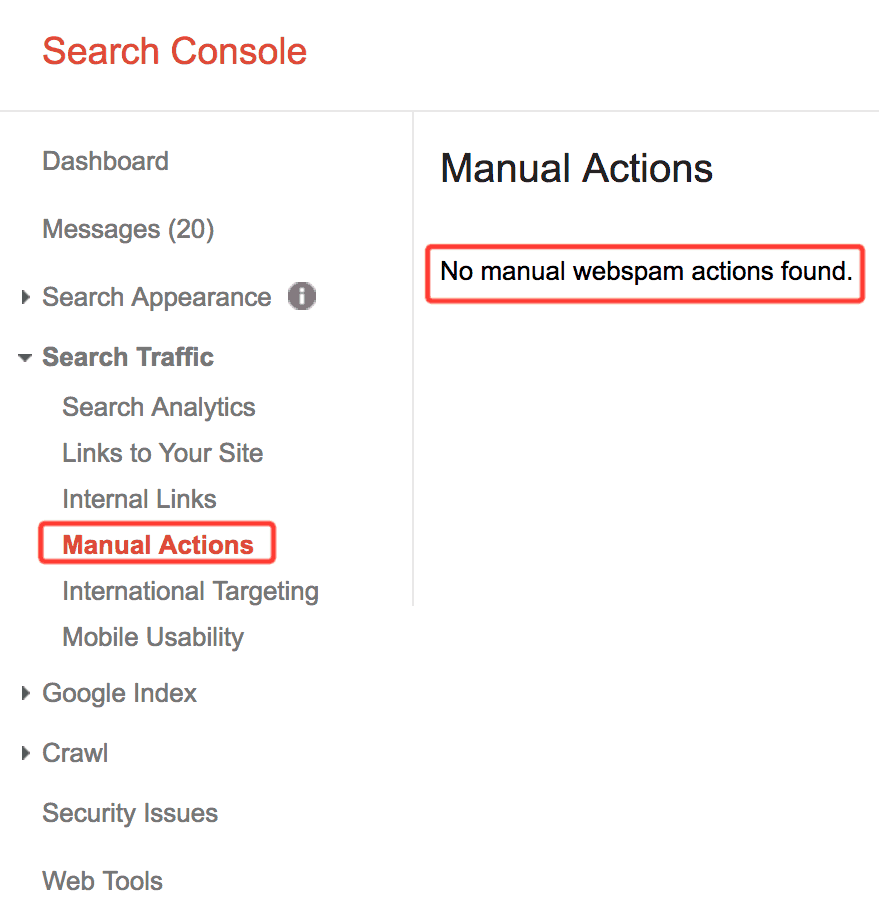
The documentation you provide is essential. Manual reviews are performed by people. The more thorough you are, the more likely it is that your penalty will be reversed. Here’s what to include:
- An explanation of the quality issue on your site
- A description of the steps you’ve taken to correct it
- Documents that detail the results of your corrections
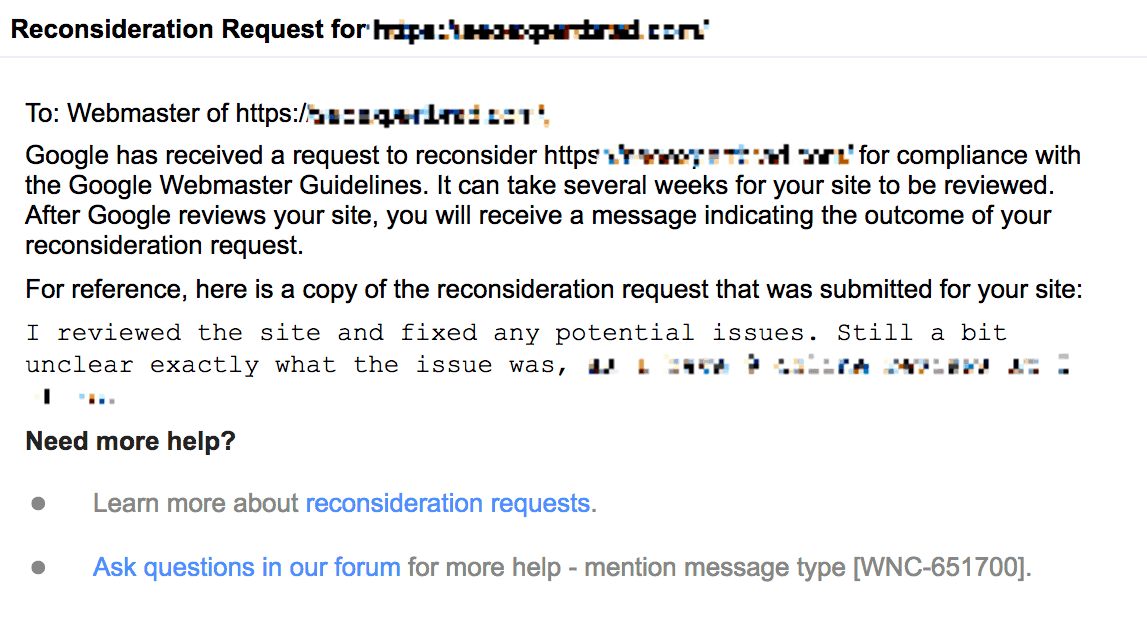
For example, you might want to attach a list of links you’ve removed or disavowed. You could also include a copy of your original content and a copy of what you replaced it with.
Be patient. It may take Google several days to acknowledge your request and respond to it. If you’ve done everything correctly, the result should be a reversal of the penalty.
#1: Moz Change History
Google updates its algorithms frequently.
Some updates are significant and introduced with a lot of fanfare. Others are small and cause less of a stir.
One penalty checker tool that’s helpful isn’t technically a tool. It is a list maintained by Moz that keeps tracks of Google’s updates.
This tool will not help you track down an old penalty. However, it can still be useful. If you notice a significant drop-off in your traffic, head to their page.
If Google just released an update, you will know what happened to your site. Moz also offers a tool called MozCast.
#2: Fruition Google Penalty Checker
Our next pick has both free and paid options. We like it because it coordinates with Google Analytics.
It is the Fruition Google Penalty Checker.
Using the free version of the tool, you can:
- Check two websites for Google penalties
- Get accurate results for the past three months
- Get a chart showing which penalties have affected your sites
The free option allows for monitoring of only two websites. You do not need a credit card, and it takes just a minute to set up.
If you want to monitor one or more sites, you can upgrade. The premium option provides:
- Continuous monitoring of three or more websites
- Access to detailed Google impact reports
- Probabilities that your site was impacted by a Google update
- The ability to share reports with your clients
- Personal support
Remember, you will have to share your analytics information to use this program.
#3: Panguin Tool from Barracuda
The next penalty checker tool on our list is not new. In fact, it has been around a long time. It is the Panguin Tool from Barracuda.
This is another tool that connects to Google Analytics. All you need to do is log in with your Analytics ID. In return, you shall get a detailed chart of your site’s traffic.
Specifically, you will see your traffic as it responds to algorithm changes. Each time Google updates, you can see whether your site is impacted.
For first-time users, the charts can be a bit confusing. There’s a lot of information to absorb. However, Barracuda supplies some features that help.
One of our favorites is the dashboard. It shows users an array of icons. You can use them to filter the data you receive. For example, you can look at only one Google update at a time.
There’s a reason this tool has endured. It provides useful features to help you monitor your site. And, it is free!
#4: Rank Ranger
One of the trickiest things about Google is that they do not always announce updates.
Some are advertised ahead of time. Recent examples include the Panda and Penguin updates. Another widely-heralded update for 2019 is Mobilegeddon.
However, sometimes updates happen under the radar. They have not announced ahead of time or even after the fact. It can be challenging to keep track.
Rank Ranger can help. It is a free tool. Users get access to detailed information about both public and phantom updates. (A phantom update is one that’s not announced.)
One thing we like about Rank Ranger is its easy-to-read charts. You will get a display that shows your site in one of three colors. Each color has a meaning. For example:
- Blue indicates you have nothing to worry about
- Green reports you are safe but not perfect
- Red means your site is in danger of being penalized
It is essential to keep track of Google’s changes. The Rank Ranger trackers are sensitive. If you look on their site, you will see that they have detected many changes not announced by Google.
#5: SEMRush Sensor
So far, the penalty checker tools we have reviewed have a lot in common with each other. This one – the SEMRush Sensor – is unique.
Just a quick visit to their site indicates why. They monitor search activity and search results every day.
As a result, they can detect SERP changes as they happen. They can then advise their users of potential algorithm updates.
They provide a list of Google activity by industry. That is information that can be helpful even if your site is unaffected.
Of course, you can also add your site to get an analysis. It looks at your pages and keywords. Then, it provides you with feedback about SERP volatility.
We like that they provide color-coded results.
It is normal to have some SERP volatility. They use colors to indicate when activity is abnormal. For example, red indicates high volatility.
#6: GRUMP Rating
This last tool will not analyze your site. Instead, it analyzes Google itself.
It will tell you when Google is in a good mood. That means there aren’t any algorithmic changes on the horizon. And, it will tell you when Google is grumpy. In other words, it alerts you when things are volatile.
The Google GRUMP rating is designed to give users a heads-up. If you monitor it every day, you can be prepared for changes.
For example, as of this writing, Google’s mood is “cautious.” It has been the same for three days. That might mean nothing, but it could indicate a coming change.
The three main ratings are:
- Chilled – changes are unlikely
- Cautious – changes are possible
- Grumpy – changes are likely
There’s a range within each rating. By keeping tabs on the mood, you can stay on top of algorithm changes.
Identifying a Website Penalty is Step 1
Getting hit with a Google search penalty can destroy your rankings overnight.
Use one of these penalty checker tools to identify the problem. Then, take your time and resolve it.
Going forward, monitor your site and stay abreast of the latest terms of services. These simple actions can help keep your website in good standing.
Always keep a Google penalty checker tool in your back pocket, just in case.

